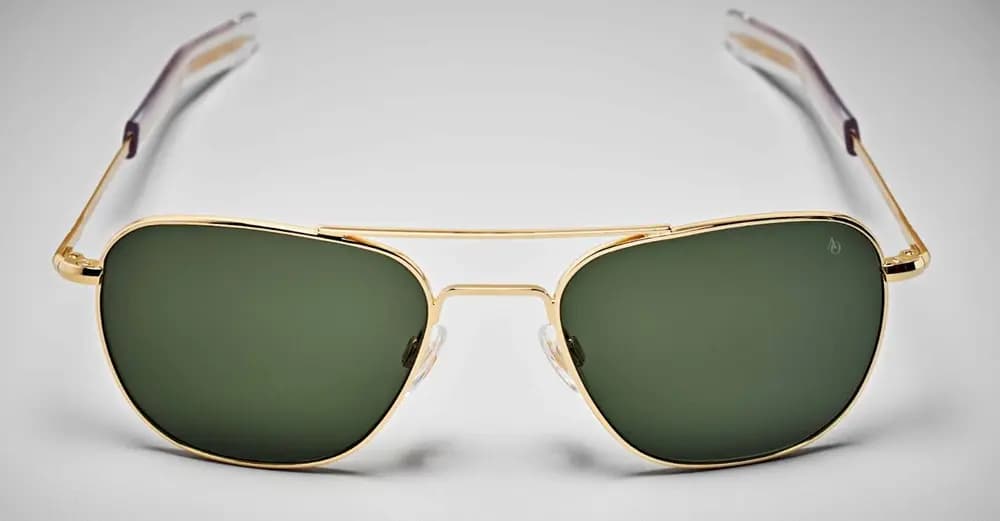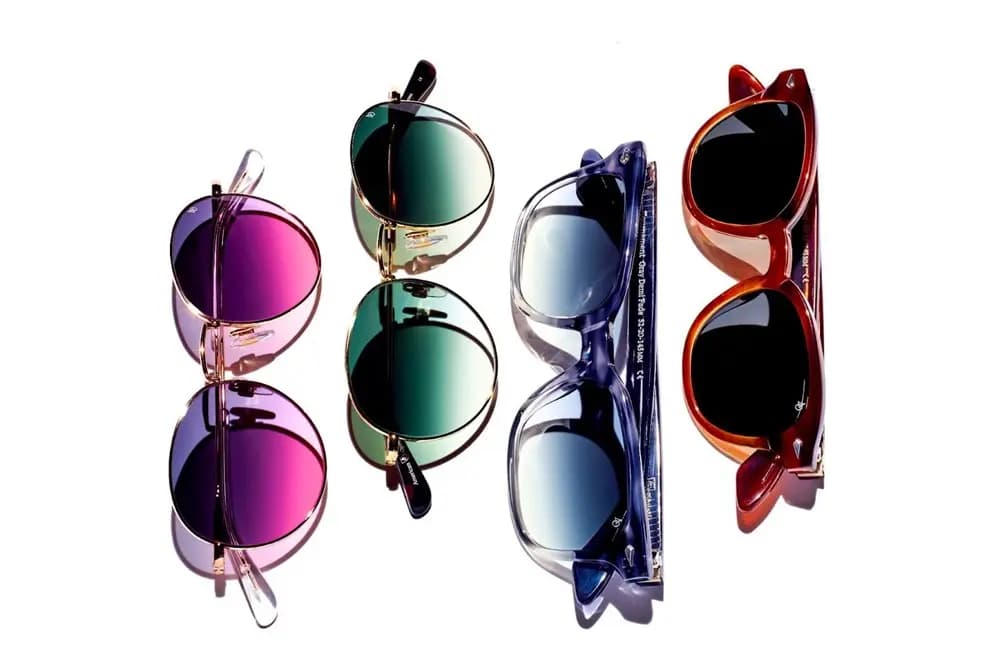
Full-Frame vs. Half-Frame Sunglasses: Which Style Suits You Best?
This article delves into the nuances of both styles to help you decide which frame suits you best. Whether you wear glasses for vision correction or style, understanding the differences in frame types can enhance your eyewear experience.
Understanding Full-Frame Sunglasses

Full-frame glasses are characterized by their design, where the frame completely encircles the entire lens. This classic style isn’t only about aesthetics but brings several functional advantages.
1. Durability and Protection
Full frames are recognized for their robust construction, making them a reliable choice for most. This is particularly beneficial for younger users or those with active lifestyles who might require extra durability in their eyewear. The solid construction, often utilizing sturdy materials like metal or high-quality plastics, like acetate, ensures that the lenses are well-protected from everyday impacts to reduce the likelihood of damage.
2. Suitability for Thick Lenses
For those who require thick lenses, either due to strong prescriptions or specific vision correction needs, full-frame glasses are typically the most ideal option. Their solid structure provides the necessary support and stability for heavier lenses to result in both comfort and functionality. This feature is important for maintaining the integrity of the glasses over time, especially when dealing with high-prescription lenses that may be prone to slipping or misalignment in less secure frames.
3. Versatile Style Options

The aesthetic appeal of full-frame glasses is timeless. They offer a full-bodied look that can complement a wide array of personal styles and face shapes. This versatility is further enhanced by the variety of materials available, from traditional metals that offer a classic and professional look, to modern plastics and polycarbonates that allow for more color and design flexibility. Full-frame glasses can adapt to various fashion senses, from the professional to the trendy, making them a universal choice for different age groups and style preferences.
4. Adaptability to Face Shapes
Full-frame glasses are known for their ability to suit a variety of face shapes. The complete framing around the lens can accentuate the facial features and provide a balanced and harmonious look. This makes them an excellent choice for individuals with oval, square, or heart-shaped faces, as they can help to enhance the natural symmetry of the face.
5. Range of Design Choices

With advancements in eyewear technology, full-frame glasses are no longer limited to traditional styles. Modern full frames come in a range of designs, from sleek and minimalistic to bold and statement-making. This variety ensures that there is a full-frame option for every taste and preference, making them a versatile accessory that can adapt to changing fashion trends.
Exploring Half-Frame Sunglasses
Half-frame sunglasses are unique in their construction as they cover only part of the lens - typically the top half. This distinctive style offers several benefits, catering to a range of preferences and needs.
1. Lightweight Design
One of the most significant advantages of half frames is their reduced weight. They use less material in their construction, so half-frame glasses can offer unparalleled comfort, especially for extended wear. This lighter design minimizes pressure on the nose bridge and ears which reduces the chances of discomfort and fatigue. This feature is especially beneficial to those who wear half-rim glasses for long periods such as office workers and avid readers.
2. Aesthetics and Style
Half-frame eyeglasses are renowned for their elegant and sophisticated appearance. They strike a balance between being noticeable and not overpowering the face, making them ideal for those seeking a more understated yet stylish look. This style is particularly favorable for those who want to complement their professional attire or add a touch of elegance to their everyday wear.
3. Variety and Fashion Flexibility
The variety available in half-frame designs is extensive. From minimalist half-rimmed styles that offer a sleek and modern look to the more avant-garde half-rimless frames that give a sense of edginess, there's a design for every taste. The range extends to the materials used as well - metal half-rims offer a classic and sturdy feel, while plastic or polycarbonate frames can provide a lighter, more colorful option.
4. Face Shape Compatibility
Half-frame glasses are versatile as they complement various face shapes. The partial framing can accentuate the eyes and the upper part of the face. They’re an excellent choice for those with oval, round, or heart-shaped faces. This selective framing draws attention to the wearer's natural features and enhances their overall appearance.
5. Customization and Lens Options
Another aspect where half-frame glasses shine is in customization. Users have the flexibility to choose from a wide range of lens types, from single vision to progressives, catering to different vision needs. Additionally, they can opt for various coatings and tints, making them not only a fashion accessory but also a functional one. Feel free to tailor them to your specific lifestyle requirements like driving, sports, or computer use.
Comparing Full-Frame and Half-Frame Sunglasses
When choosing between full-frame and half-frame sunglasses, it's important to understand the differences and how they cater to various needs and preferences.
We’ve outlined a detailed comparison based on the specific features of these two frames:
| Feature | Full-Frame Sunglasses | Half-Frame Sunglasses |
|---|---|---|
| Construction | The frame encircles the entire lens. | The frame covers only part of the lens (typically the top or sides). |
| Durability and Protection | High durability, ideal for active users; robust construction with materials like metal or plastic. | Less robust than full frames, requiring more careful handling. |
| Weight and Comfort | Slightly heavier may add extra weight during long wear. | Lighter, reducing pressure on the nose bridge and ears, ideal for prolonged wear. |
| Style | Offers a classic, full-bodied look; suits a wide array of styles and face shapes. | More refined and sophisticated; a subtler style statement. |
| Suitability for Lens Type | Better suited for thick lenses due to solid structure. | Suitable for standard lens thickness; may not support very thick lenses. |
| Material Variety | Available in traditional metals for a professional look, and modern plastics/polycarbonates for color flexibility. | Variety in design from minimalist half-rim to trendy half-rimless; materials include metal and lighter plastics/polycarbonates. |
| Face Shape Compatibility | Suitable for various face shapes, enhancing natural symmetry. | Complements oval, round, or heart-shaped faces by accentuating eyes and upper face. |
10 Factors to Consider When Choosing Sunglasses Frames
When it comes to selecting the right sunglasses frames, you should take into account several essential factors. These factors can help you find the perfect frames that not only suit your style but also provide the necessary comfort and functionality.
Here are the key factors to keep in mind when choosing sunglasses frames:

- Consider your face shape: Different frames complement various face shapes. For example, rectangular frames suit round faces, while round frames are better for angular faces.
- Choose based on lifestyle: Active lifestyles require durable frames, whereas more casual or office environments might allow for stylish, lightweight frames
- Select the right frame material: Options include metal, plastic, acetate, and titanium, each with unique properties like durability and weight.
- Determine your frame style preference: Choose from styles like full-frame, half-frame, rimless, or semi-rimless, depending on your aesthetic preference and coverage needs.
- Pick the appropriate lens size: Larger lenses offer more protection, while smaller lenses can be more stylish. Choose what fits your face and needs.
- Ensure proper bridge fit: Ensure the bridge fits comfortably and securely on your nose for stability and comfort. Choose a style with adjustable nose pads if you have a hard-to-fit bridge.
- Select suitable temple length: Choose a length that fits well around your ears and doesn’t pinch the side of your head; adjustable or customizable options can provide a better fit.
- Look for adequate UV protection: Look for sunglasses offering 100% UVA and UVB protection to shield your eyes from harmful rays.
- Consider tint and coatings: Tints affect visibility in various lighting, and coatings like anti-glare or scratch resistance can add functionality.
- Align with your fashion preferences: Ultimately, choose frames that align with your personal style and make you feel confident.
Find Your Perfect Sunglasses Frames in the AO Eyewear Shop!
When it comes down to selecting a perfect pair of sunglasses, your choice should depend on your personal preferences, lifestyle, and functional needs. Whether you lean towards the durable and classic full frames or the sophisticated and lightweight half frames, remember to choose what feels right for you.
At AO Eyewear, we offer a diverse range of styles to suit every taste and need. From driving sunglasses to the perfect pair for your next outdoor adventure, we've got you covered. Browse our collection today and find your ideal match!
10% off your first purchase
Join our email list to be first to hear about new arrivals, limited-edition drops, sales, and more! Exclusions apply; cannot be combined with other discounts and offers.







